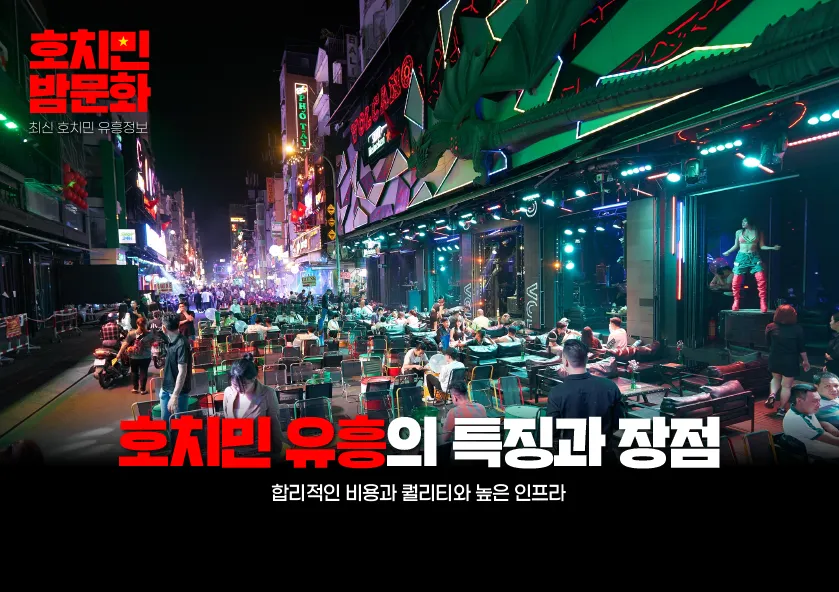20 Best Ways For Choosing Ho Chi Minh Nightlife Spots
20 Best Ways For Choosing Ho Chi Minh Nightlife Spots
Blog Article
Ten Suggestions For Vietnamese Massage Spas, Parlors, And Etiquette
Here are 10 tips on how to navigate Vietnamese massage salons and spas. This guide will make sure you get the best experience that you can get, whether you opt for a budget-friendly spa or an expensive one.
1. Pick a Reputable Beauty Salon or Spa
If you are looking for a massage in Vietnam, research is crucial. Professionalism and quality can differ widely. Check out reviews on the internet, ask for recommendations, or choose spas affiliated with hotels that are reputable.
Spas like Golden Lotus Spa, Temple Leaf Spa and even high-end options, The Spa at The Reverie Saigon is renowned for their excellent service in a an elegant setting.
Do not choose the most affordable places located in tourist-friendly areas, since they may not provide a efficient or pleasant service.
2. Find out about the services offered
Vietnamese massage parlors are a ideal place to relax and relax. They offer all kinds of foot massages, from to more sophisticated treatments such as aromatherapy or herbal compresses.
Ask questions to learn more about the services are offered. If the menu isn't clear The staff is typically ready to help you understand.
3. High-quality spas can be booked in Advance
Popular and high-end spas are typically booked up during weekends and holidays. If you're looking for a specific appointment or time slot you want, it's best to book ahead.
Many spas provide the option of booking online or by phone. Some offer discounts for making reservations in advance.
4. Make sure you communicate your preferences clearly
Discuss your preferences before the massage begins. This includes the level of pressure you prefer (light, medium or strong) as well as the areas that you would like the therapists to concentrate on or areas you would like to stay clear of.
Don't be afraid to request adjustments if you are uncomfortable or feel the pressure is too high during your massage.
5. Dress code and change procedure
Most Vietnamese spas will provide the client with a robe or disposable underwear to use for your massage. You might be asked to wear your pajamas at the spa to enjoy traditional massages, such as Vietnamese or Thai.
Change facilities are typically private. Be respectful of the spa's changing procedures and drapery techniques. They are intended to keep modesty.
6. Tipping Etiquette
In Vietnam the tipping policy is non-negotiable However, it is highly it is appreciated. This is true especially for massage parlors that are budget or mid-range salons. The typical tip is between 10-15% of service costs.
In some high-end salons, the service charge is included in the price. This makes tipping less common. A small gesture can be appreciated for excellent service.
7. Learn about the local manner of using the spa
Arrive On Time When you arrive on time, it indicates that you value the spa staff, and also ensures that you receive the full treatment.
Quiet Ambience: Maintain a peaceful environment by keeping conversations to a minimum.
Hygiene: It's common to shower prior the treatment, especially in case you've had a hectic day. Certain spas provide a shower prior to treatment, or you might be asked to wash your feet.
8. Negotiation and Payment
Cash is the preferred option in mid-range and budget spas. Credit cards are accepted at higher-end establishments. If paying by card, ensure that there are any fees.
Do not bargain in popular or costly spas. This is considered unprofessional. In smaller and local parlors, prices might be flexible, but it's better to agree on the cost upfront if there's any uncertainty.
9. Know the Differences Between Legitimate Massage Parlors and dubious Salons
There are a few massage parlors offering "extra services" in addition to massage. These locations have bright neon signs and can also have a nightclub vibe.
Pick a place that is clean, well lit and has a professional look for an expert massage. Online reviews can help you to avoid places with bad reviews.
10. Get Additional Amenities
Many spas provide extra facilities such as hot tubs and saunas. Most spas include these amenities in their costs, which means you can take advantage of these facilities to relax.
Relaxation lounges are available in a variety of spas, where you can unwind in a soothing massage. Enjoying these amenities can make your spa visit more extravagant.
Additional Etiquette Tips for a Better Experience
You may be given small envelopes of tipping in some luxury Vietnamese spas following the treatment. This is a great method to express your gratitude in a private manner.
After your massage to get dressed and dress. There is no need to rush. A good massage will make you relaxed and tired. Water will help you flush out the toxins.
Final Thoughts
Vietnamese massage spas and parlors provide various treatments for a variety of preferences and budgets. You'll be able to relax whether you choose an old-fashioned massage at a local spa, or prefer a more lavish experience. Be sure to do your research prior to your visit and then relax. Follow the best í¸ì¹ë¯¼ ê°ë¼ì¤ì¼ for site advice.
Vietnamese Street Food: Top 10 Tips For Trendy Restaurants, Night Markets And International Cuisine
Vietnamese food is known for fresh, vibrant flavors, delicious food, and a broad selection of dishes, ranging from street food to trendy eateries. You can also find international dishes with a Vietnamese flair. Here are 10 top suggestions to make the most of your culinary trip to Vietnam.
1. Embrace Street Food Culture
It is recommended to go to the local street stalls, or market nights to taste the tasty street food. It is essential to try Vietnamese dishes such as banh m (a Vietnamese sandwich), Pho, (noodle soup) and bun cha.
Explore street food at popular night markets, like Ben Thanh Market or Dong Xuan Market.
2. Street Food Dishes That You Should Try
Understanding the names of popular Vietnamese dishes will help you navigate menus and food stalls on the streets. It is recommended to try these dishes:
Banh Xeo is a Vietnamese sweet pancake.
Goi Cuon (fresh spring rolls)
Bun Bo Hue beef spicy noodles soup (Hue)
Cao Lau - Pork Noodles (Hoi An)
Che (Vietnamese sweet dessert soup)
3. Go to Night Markets to get authentic and inexpensive Experiences
Night markets provide a lively atmosphere with a mix of food and souvenirs as well as local merchandise. The markets are a great place to sample street food at a reasonable cost and to learn more about the local lifestyle.
Local street food and snacks are very popular in markets such as Hanoi's Weekend Night Market. Da Nang's Helio Night Market. And Hoi An Night Market.
4. The most delicious street food options are often found in the local food scene.
Locals are the most reliable guide for selecting a streetfood vendor. A long line at a stall or a group of locals is generally a sign of fresh, high-quality street food.
You can check whether the food is fresh by observing how it's made. Don't be shy to ask other travellers for suggestions or talk to locals.
5. Learn the basics of Vietnamese Phrases and Experience More Fun
A small amount of Vietnamese will be helpful in smaller restaurants and markets. Phrases like "Bao nhieu tien?" (How much?) It is easier to order food when you are using phrases such as "Choi mot" ..." or "Choi mot ...)".
Although some vendors may not be able to speak English well However, they'll be patient and assist you navigate the menu.
6. Traditional Vietnamese cuisine with a modern Trendy Restaurants
Vietnam's cities are home to a growing number of trendy eateries that provide a contemporary take on traditional dishes. Look for restaurants that provide a creative twist on classic dishes by using fusion technique, high quality ingredients, or a unique presentation.
The Deck Saigon (Ho Chi Minh City), Secret Garden (Ho Chi Minh City), Home Hanoi, and many other restaurants are renowned for their Vietnamese dishes in a chic setting.
7. Sample International Foods with the Vietnamese flair
The cuisine of Vietnam is a mix of international cuisines which have been adjusted to the local taste. You'll see Vietnamese spices and herbs in Japanese, French, Korean, Italian, and other restaurants.
Don't skip out on Vietnamese type pizzas, sushi fusion or French bakeries that make use of local ingredients like lemongrass or chili.
8. Take note of hygiene and Freshness
Street food is usually safe, however, you should only consume it from vendors who cook the food directly in front of you. Avoid stalls whose food has been on the market for long periods of time, particularly in hot weather.
If you're concerned about the food safety it's a good idea to check reviews on the internet.
9. Go to local markets to locate ingredients and even classes
Find out more about the ingredients in Vietnamese food by visiting local markets such as Ben Thanh Market, Dong Ba Market or Hanoi's Long Bien Market. These markets offer the chance to look at fresh fruits and vegetables, spices, or meats.
There are cooking classes available at many fashionable restaurants and hotels to discover how to make Vietnamese cuisine using ingredients from the local market.
10. Enjoy local beverages alongside your meals
The combination of local beverages along with your meal will enhance your culinary experience. Some of the most popular choices are Vietnamese Iced Tea (Ca Phe Sua Da), sugarcane or Hanoi Beer.
Cocktails crafted with local ingredients like lychee, passionfruit, or lemongrass are typically seen in chic bars. These drinks are a great way for you to enjoy and cool down.
Vietnam Cuisine: Bonus Tips
Ask for Sauces and Herbs: Vietnamese dishes often come with a range of herbs and sauces, such as nuoc cham (fish sauce based dipping sauce) as well as chili paste. Don't be afraid to ask more to suit your tastes.
Don't Skip Street Food Desserts: Vietnam has a wide range of sweet treats worth looking into, from sticky rice desserts to Banh Flan (Vietnamese flan) and local ice creams. Night markets are a great way to find these sweet snacks.
Conclusion
The food culture of Vietnam is extremely diverse, with everything from authentic street food to trendy international and dining options. If you follow these tips, then you will be well-prepared to navigate Vietnamese markets on the streets, explore local cuisines, or take in the distinct flavors that create Vietnamese food so delicious. Vietnam's diverse culinary scene offers something for every taste, no matter if you are an avid foodie. See the best í¸ì¹ë¯¼ ë§ì¬ì§ for more recommendations.